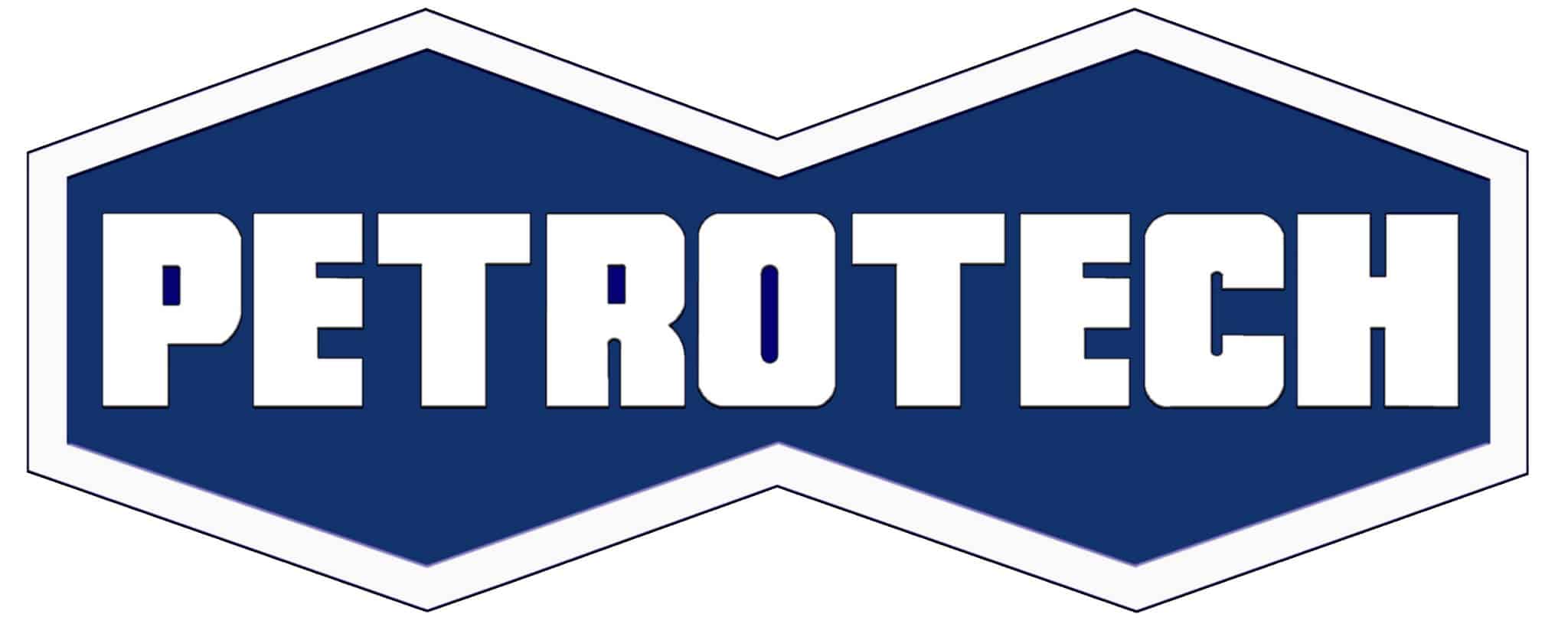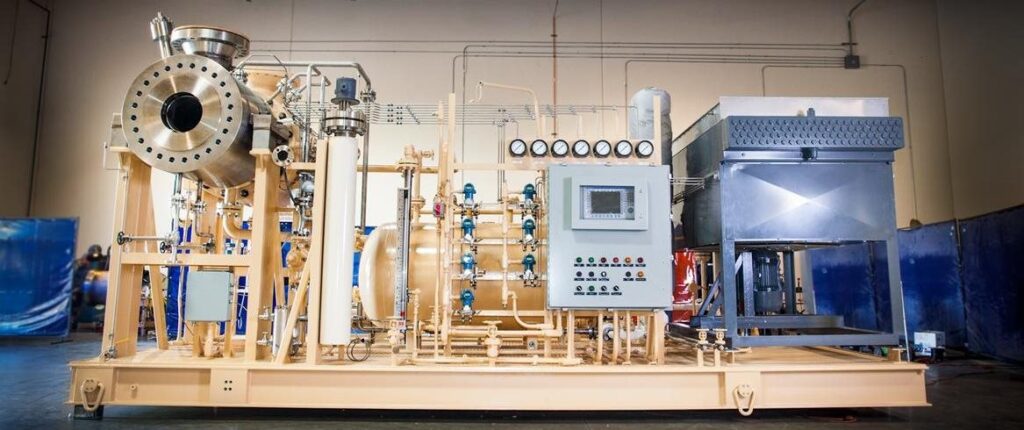Natural gas processing plays a crucial role in extracting valuable hydrocarbons for industrial use. One of the most important technologies in this process is the turboexpander. Turboexpanders are devices that reduce gas pressure, extract mechanical energy, and also enable efficient separation of natural gas liquids (NGL). Instead of relying on pressure-reducing valves that waste energy, facilities use turboexpanders to recover power while improving efficiency and lowering operating costs. This article explores the role of turboexpanders in NGL recovery, their working principles, key components, and applications in industrial gas processing. It also highlights how Petrotech’s advanced control solutions optimize turboexpander performance for better efficiency and reliability.
The Role of Turboexpanders in NGL Recovery
Natural gas from production wells contains a mixture of hydrocarbons, including methane, ethane, propane, butane, and pentane. At high pressure, these hydrocarbons exist in a gaseous state. However, for commercial use, the heavier fractions—propane, butane, and pentane—must be separated and processed into Y-Grade condensate, also known as natural gas liquids (NGLs). Turboexpanders make this possible by rapidly expanding high-pressure gas, causing a significant temperature drop. This cooling effect condenses the heavier hydrocarbons into liquid form while the lighter gases, primarily methane and ethane, remain gaseous. The NGLs are then sent for fractionation, while the remaining gas undergoes compression and enters the pipeline for distribution.
How Turboexpanders Work in NGL Recovery
Turboexpanders operate on gas expansion thermodynamics, where a drop in pressure leads to energy extraction and cooling. Their function in an NGL processing plant follows these steps:
High-Pressure Gas Enters the Turboexpander
Raw natural gas enters the turboexpander at high pressure, typically from a pipeline or a gas processing unit. A preheating system may serve to prevent freezing or hydrate formation during expansion.
Gas Expands Through the Turbine
As the gas moves through the turbine, it expands rapidly. This expansion reduces its pressure and temperature, therefore, converting the lost energy into mechanical work. The cooling effect causes the heavier hydrocarbons to condense into liquid NGLs.
Mechanical Energy is Transferred to a Driven Load
The rotational energy from the turbine powers a connected load, such as a compressor. Then, the compressor pressurizes the remaining methane and ethane, ensuring they meet pipeline specifications. In some systems, this energy drives a generator to produce electricity.
Low-Pressure Gas Exits the Turboexpander
After expansion, the gas exits at a much lower pressure and temperature. The separated NGLs move to fractionation units for further processing. Whereas, the gaseous methane and ethane are sent to a boost compressor for reintegration into the pipeline network.
By utilizing turboexpanders, processing plants maximize NGL recovery, reduce energy consumption, as well as enhance operational efficiency.
Key Components of a Turboexpander System
A turboexpander system has several key components as the following sections highlight.
Turbine – The Core of the Expansion Process
The turbine is the primary energy extraction component of the turboexpander. As gas flows through the turbine blades, its expansion causes the blades to spin, converting pressure energy into rotational motion. The turbine’s efficiency determines how much energy is recovered from the gas stream.
Driven Load – Utilizing Extracted Energy
The turboexpander is connected to a driven load, which could be a compressor, generator, or pump. In gas processing plants, the compressed gas improves efficiency, ensuring maximum energy utilization. If connected to a generator, the system can convert mechanical energy into electricity to power industrial operations.
Shaft – Transmitting Rotational Energy
The shaft connects the turbine to the driven load, transferring mechanical energy between components. It must be precisely balanced to reduce friction and also ensure smooth, uninterrupted operation.
Lubrication and Sealing Systems
Lubrication plays a vital role in cooling and protecting moving parts. Oil pumps, filters, and reservoirs provide continuous lubrication to bearings, hence, reducing wear and increasing lifespan. Sealing systems prevent gas leakage and also maintain the necessary pressure differentials for efficient expansion.
Control Systems – Optimizing Turboexpander Performance
Modern turboexpander systems rely on advanced control systems to regulate temperature, pressure, and rotational speed. These systems adjust process parameters in real time, ensuring optimal performance even under fluctuating gas flow conditions.
Types of Turboexpanders Used in NGL Processing
Radial Inflow Expanders
Radial inflow expanders direct gas inward toward the turbine blades. This design is highly efficient for high-pressure applications, thus, making it common in natural gas processing and refrigeration systems.
Axial Expanders
Axial expanders allow gas to flow parallel to the turbine shaft. They are ideal for applications with high flow rates and moderate pressure differentials.
Cryogenic Expanders
Cryogenic turboexpanders operate at extremely low temperatures and serve in LNG production as well as deep NGL recovery. They help reduce gas temperatures significantly, enabling efficient hydrocarbon separation.
Industrial Applications of Turboexpanders
Turboexpanders improve efficiency in several industries by recovering energy and optimizing gas processing. The following sections highlight some examples.
Oil & Gas Production
Turboexpanders recover energy from high-pressure gas wells and assist in pressure reduction for gas injection or export.
Pipeline and Gas Processing
They are used for pressure letdown in pipelines, gas dehydration, and sweetening processes.
LNG and Petrochemical Industry
Turboexpanders play a vital role in LNG liquefaction and the fractionation of hydrocarbons in petrochemical refineries.
Power Generation
They generate electricity from pipeline pressure reductions, increasing efficiency and reducing energy costs.
Maximizing NGL Recovery using Petrotech’s Control Solutions for Turboexpanders
Petrotech’s Open Architecture control systems provide cost-effective, flexible, as well as easily maintainable solutions for turboexpanders in NGL recovery. Unlike proprietary systems, they integrate with existing plant automation, reducing total ownership costs and simplifying standardization. With non-proprietary hardware, facilities can source spare parts and repairs locally, avoiding high costs and supply constraints. Also, operators benefit from lower maintenance costs, with 24-hour remote support from Petrotech when necessary.
In addition, our Open Architecture control solutions offer scalable configurations, from simplex setups to high-reliability Triple Modular Redundancy (TMR) systems. Hence, ensuring customized solutions for any operational requirement. Built on proven, field-tested designs, these systems enhance reliability, efficiency, and also performance monitoring. By upgrading to Petrotech’s Open Architecture control systems, turboexpander operators gain greater flexibility, reduced costs, and long-term operational efficiency. Therefore, making it a smarter alternative to proprietary solutions. Contact us today to discuss your turboexpander requirements and discover how we can enhance your system’s performance and reliability.


